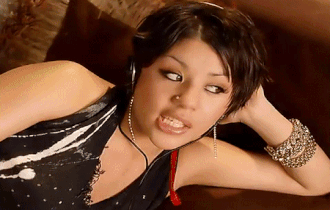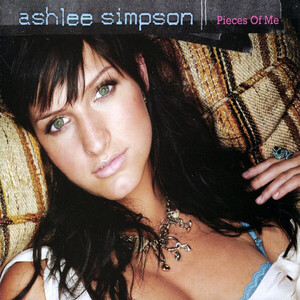Released: 16th July 2001
Writers: Charlotte Edwards / Sam Harley
Peak position: #30
Chart run: 30-51
The Sugababes were still chasing a second top-ten hit as they released the final single from their debut album. Soul Sound wasn’t about to change that, but it is a quality track, even as one of the group’s lesser-remembered singles.

Soul Sound is one of those songs that works terrifically well in the context of an album. It’s positioned in the middle of the Sugababes’ debut – One Touch – and juxtaposes effectively with the surrounding tracks, offering a change of tone that makes it stand out. But that doesn’t necessarily mean Soul Sound was the right choice to release as a single, particularly with much at stake for the group. Despite One Touch hovering around the top 40, it hadn’t yet climbed any higher than #26. And, while critical acclaim was forthcoming, the Sugababes were yet to repeat the top-ten success of their debut single, Overload. While there is much to like about Soul Sound, nothing about the song felt likely to shift the overall direction of the campaign. Indeed, they later spoke about not wanting to release the track at all as it pushed them in a slightly poppier direction than they’d intended.

And certainly, there is an element of that with Soul Sound. It’s built around a crisp, gentle beat and twanging guitar melodies, which dial down the angsty drama of the previous singles in favour of a more lovestruck approach: “I touch the sky, all around, your eyes, and who would believe, what’s happening to me”. The song is sweetly performed with Siobhán Donaghy on lead, and there are some strikingly effective melodies (“Patience I will learn, before this fire burns, intuition’s got a hold of me there’s, magic in the air”) woven into the verses. Yet, the addition of: “Doo, doo, doo, do-doo” backing vocals may, for some, push Soul Sound into sounding a bit too cutesy at times.

The track is, by any measure, let alone for a teen-pop song, a slow-burn. It’s one minute and 40 seconds before the first chorus (even on the radio edit), so it’s not immediately apparent where the track is going. What Soul Sound does beautifully well along the way, though, is showcase the delectable quality in Mutya Buena, Keisha Buchanan and Siobhán Donaghy’s voices. They’d inevitably be compared to their peers, but the harmonies when they sing together are in another league altogether. The arrangement is charmingly mesmerising and feels entirely organic and free. So much so that the middle eight: “Da-da da-na, da-da da, soul sound, soul sound, so-o-o-ound, wait a minute soul sound, ahh, ooh, do-do-do, da-da-da-da-do-do” is almost as though the Sugababes are cutting loose and casually jamming in the studio.

Indeed, that’s very much the charm of Soul Sound once the chorus finally arrives. Lyrically, it’s as simple as could be, repeating: “The soul sound” four times. But the group riff and ad-lib around the melody: “The soul sound (oh, mm-mm), the soul sound (mm-mmm), the soul sound (feeling free), the soul sound” throughout, which is so utterly satisfying to listen to. As Soul Sound fades to a close, the layering: “The soul sound (mm-mm, wait a minute, soul sound), the last sound, downtown (mm-mm), all around, soul sound; the soul sound (mm-mm, wait a minute soul sound), the last sound, downtown (mm-mm), all around, soul sound…” is dreamily blissful.

As a song that can just hazily wash over the listener, it’s a masterclass and a testament to the Sugababes’ talent. In that regard, Soul Sound is an utter triumph and a sorely underappreciated one at that. But it’s debatable whether many of the things the track does so well are what was needed at a point when audience interest in One Touch was drifting short of London Records’ expectations. It would’ve been fine if this had been merely a victory lap to squeeze the last few album sales out of a successful campaign. But for what ultimately proved to be a make-or-break single, it does feel the track was set up to fail.

The accompanying music video fits Soul Sound well while accentuating why the track was a questionable single choice. It’s set in the room of an apartment building where Mutya is lying on a sofa, Keisha sits cross-legged on a beanbag, and Siobhán is perched on a chest of drawers. Floating above each member is a transparent version of themselves, representing their souls…and that’s about it. There are some neat shots, like Siobhán’s ‘soul’ dancing up the wall, and a similar double-exposure effect is applied to passers-by in the street, making their movements feel blissfully trippy.

Furthermore, the colour palette of the apartment – earthy browns, oranges and reds – bathed in sunlight beaming through the windows creates an inherently relaxing, chilled summer aesthetic. Yet, it’s also distinctly genteel and sedate, with the Sugababes more or less rooted to the spot throughout (not entirely, though; Mutya does, at least, stand up towards the end). Gentle panning shots across the room make Soul Sound feel almost like dynamic music video wallpaper. That fits the song’s mood but equally is the opposite of what a single that needed to make an impact should be doing.

Hard as it is to imagine from something so innocuously pleasant, the music video for Soul Sound was a source of tension between the Sugababes and London Records. The label became concerned that the group’s image as moody teenagers may be off-putting and thus ordered them to smile more in a bid to appear affable. That direction isn’t so obvious as to be jarring; nonetheless, compared to their earlier singles, it suddenly becomes apparent how much the Sugababes are shown grinning for no apparent reason. It’s further evidence – along with choosing to release Soul Sound in the first place – that London Records were starting to exert unwelcome influence over how they thought the group should look and sound.

While the Sugababes did promote Soul Sound, it didn’t do as well on airplay as the previous singles and entered the chart at #30, spending just a fortnight in the top 75. With sales totalling little more than 14,000 copies, it’s the group’s lowest-seller and also among their lowest-peaking songs, ahead only of No Can Do (#32) and Flatline (released as Mutya Keisha Siobhán before they reclaimed the Sugababes name) which reached #50. Furthermore, Soul Sound did little to drive interest in One Touch. The album re-entered the top 100 and climbed to #85 before dropping out again, bringing the campaign to a somewhat muted end.

Yet, while there were arguably better singles to have released instead, certain events that happened next would likely occur anyway, regardless. Amid rumours of in-fighting and bullying, Siobhán quit Sugababes in 2001 (though not by escaping through a toilet window, as was commonly believed to be the case) after being diagnosed with depression. It’s probably a coincidence, but the single cover – which shows Keisha and Mutya talking while Siobhán sits at the side – does feed into the notion of a division between them. London Records later dropped the group due to underwhelming sales of One Touch. They went on to be signed by Island Records and relaunched in 2002 with Heidi Range joining the line-up. In some respects, the Sugababes’ experiences with Soul Sound seemed to help refine their identity moving forward. The new material was great, but the marketing was also so much better as well. While London Records sought to change aspects of the group with Soul Sound, Island seemed more content to let them be who they were musically and visually; pushing those things to the fore immediately landed better for critics and fans alike.

For the time being, Soul Sound marked the end of an era for this iteration of Sugababes until they reunited in 2012 after the group underwent several further line-up changes. But in every other respect, it was just the beginning and perhaps even a necessary commercial blip whose next step catapulted them to the top of the charts less than 12 months later, which is precisely where they deserved to be.



